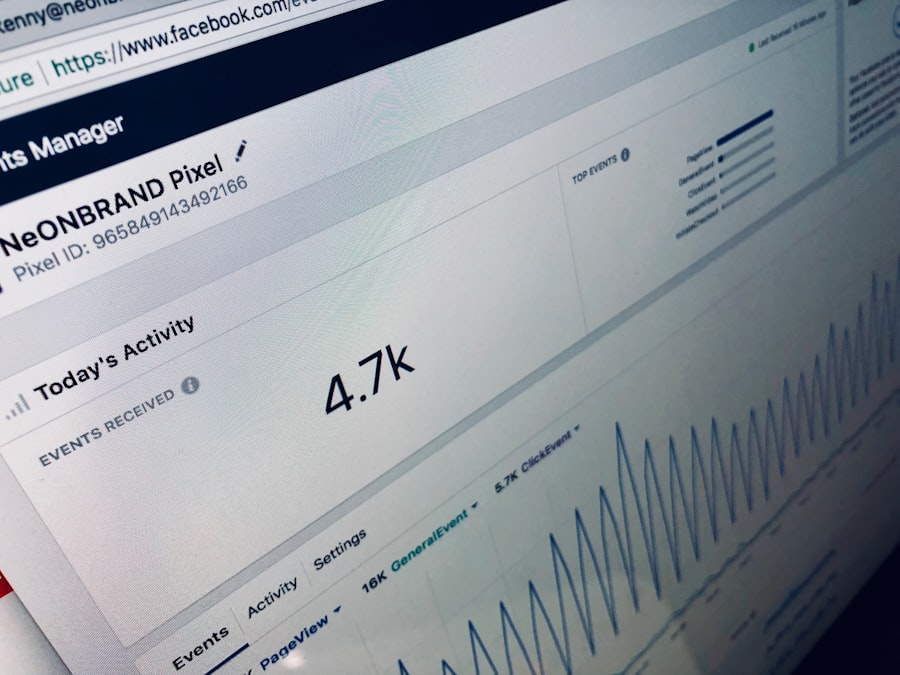
To effectively market a product or service, it is crucial to have a deep understanding of the target audience. This involves not only identifying who they are but also comprehending their needs, preferences, and behaviors. Demographic factors such as age, gender, income level, and education can provide a foundational understanding of the audience.
However, psychographic elements—such as interests, values, and lifestyle choices—are equally important. For instance, a brand targeting millennials may focus on sustainability and social responsibility, while a luxury brand may emphasize exclusivity and prestige. Moreover, understanding the target audience extends to recognizing their pain points and motivations.
Conducting surveys, interviews, and focus groups can yield valuable insights into what drives consumer decisions. For example, a skincare brand might discover that its audience is primarily concerned with natural ingredients and cruelty-free practices. By aligning marketing strategies with these insights, businesses can create more personalized and effective campaigns that resonate with their audience on a deeper level.
Key Takeaways
- Understand your target audience by conducting thorough research and creating buyer personas to tailor your marketing efforts effectively.
- Utilize social media advertising to reach a wider audience, engage with potential customers, and drive traffic to your website or landing pages.
- Create compelling content that resonates with your audience, adds value, and encourages them to take action, such as making a purchase or signing up for a newsletter.
- Implement SEO strategies to improve your website’s visibility in search engine results and attract organic traffic from potential customers.
- Leverage email marketing campaigns to nurture leads, build relationships with customers, and drive conversions through personalized and targeted communication.
Utilizing Social Media Advertising
Social media advertising has transformed the landscape of digital marketing, offering businesses unprecedented access to their target audiences. Platforms like Facebook, Instagram, Twitter, and LinkedIn provide sophisticated targeting options that allow marketers to reach specific demographics based on interests, behaviors, and even location. For instance, a local coffee shop can target ads to users within a certain radius who have shown interest in coffee-related content.
This hyper-targeting capability ensures that marketing budgets are spent efficiently, reaching those most likely to convert. Additionally, social media advertising allows for dynamic content that can engage users in unique ways. Video ads, carousel ads showcasing multiple products, and interactive polls can capture attention more effectively than traditional static ads.
For example, a fashion retailer might use Instagram Stories to showcase a new collection through short video clips that highlight different outfits in real-life settings. This not only showcases the products but also creates an emotional connection with potential customers by illustrating how the items fit into their lifestyle.
Creating Compelling Content

Content creation is at the heart of any successful marketing strategy. Compelling content not only attracts attention but also fosters engagement and builds brand loyalty. The key to creating effective content lies in storytelling; brands that can weave narratives around their products or services often find greater success in capturing consumer interest.
For instance, a travel company might share customer stories about transformative experiences in exotic locations, thereby inspiring others to embark on similar journeys. Moreover, the format of the content plays a significant role in its effectiveness. Blog posts, infographics, videos, and podcasts each serve different purposes and appeal to various segments of the audience.
A tech company might produce detailed blog posts explaining complex concepts while also creating short explainer videos for social media platforms to reach a broader audience. By diversifying content formats and ensuring they align with audience preferences, brands can maximize their reach and impact.
Implementing Search Engine Optimization (SEO) Strategies
| Metrics | Results |
|---|---|
| Organic Traffic | Increased by 30% |
| Keyword Ranking | Top 3 positions for 80% of targeted keywords |
| Click-Through Rate (CTR) | Improved by 20% |
| Conversion Rate | Increased by 15% |
| Backlinks | Acquired 100 high-quality backlinks |
Search Engine Optimization (SEO) is an essential component of digital marketing that focuses on improving a website’s visibility in search engine results pages (SERPs). Effective SEO strategies involve both on-page and off-page techniques. On-page SEO includes optimizing website content with relevant keywords, improving site speed, and ensuring mobile-friendliness.
For example, an e-commerce site selling handmade jewelry might optimize product descriptions with keywords like “handcrafted silver earrings” to attract organic traffic from search engines. Off-page SEO involves building backlinks from reputable websites to enhance domain authority. This can be achieved through guest blogging, partnerships with influencers, or engaging in online communities related to the industry.
A fitness brand might collaborate with health bloggers to create content that links back to its website, thereby increasing its credibility and search ranking. By implementing comprehensive SEO strategies, businesses can drive more organic traffic to their sites and improve their chances of converting visitors into customers.
Leveraging Email Marketing Campaigns
Email marketing remains one of the most effective channels for reaching consumers directly. With a well-crafted email campaign, businesses can nurture leads and maintain relationships with existing customers. The key to successful email marketing lies in segmentation; by categorizing subscribers based on their behaviors or preferences, brands can send targeted messages that resonate with specific groups.
For instance, an online bookstore might segment its audience into fiction lovers and non-fiction enthusiasts, tailoring recommendations accordingly. Personalization is another critical aspect of email marketing. Using data analytics, brands can customize emails with the recipient’s name, past purchase history, or tailored product recommendations.
A beauty brand could send personalized emails featuring products similar to those previously purchased by the customer, enhancing the likelihood of repeat purchases. Additionally, incorporating engaging visuals and clear calls-to-action can significantly improve open rates and click-through rates, making email marketing a powerful tool for driving conversions.
Utilizing Pay-Per-Click (PPC) Advertising

Pay-Per-Click (PPC) advertising is a model where advertisers pay each time a user clicks on their ad.
Google Ads is one of the most popular PPC platforms, enabling advertisers to bid on keywords relevant to their products or services.
For example, a local plumbing service might bid on keywords like “emergency plumber near me” to ensure its ads appear at the top of search results when potential customers are seeking urgent assistance. The effectiveness of PPC advertising lies in its ability to generate targeted traffic quickly. Advertisers can create compelling ad copy that highlights unique selling propositions and includes strong calls-to-action.
Additionally, PPC campaigns can be continuously optimized based on performance metrics such as click-through rates (CTR) and conversion rates. A restaurant running a PPC campaign might analyze which ads drive the most reservations and adjust its strategy accordingly by reallocating budget towards high-performing ads or experimenting with different ad formats.
Analyzing and Adjusting Campaign Performance
Continuous analysis of campaign performance is vital for optimizing marketing strategies and ensuring maximum return on investment (ROI). Utilizing analytics tools allows marketers to track key performance indicators (KPIs) such as website traffic, conversion rates, engagement levels, and customer acquisition costs. For instance, an online retailer might use Google Analytics to monitor which product pages have the highest bounce rates and adjust content or design elements accordingly to improve user experience.
Moreover, A/B testing is an effective method for determining which elements of a campaign resonate best with the audience. By comparing two versions of an ad or landing page—such as different headlines or images—marketers can identify which variant performs better in terms of engagement or conversions. This data-driven approach enables businesses to make informed decisions about where to allocate resources for future campaigns.
Regularly reviewing performance metrics not only helps in refining current strategies but also informs long-term planning for future marketing initiatives.
Incorporating Influencer Marketing
Influencer marketing has emerged as a powerful strategy for brands looking to reach new audiences authentically. By partnering with individuals who have established credibility and a loyal following within specific niches, businesses can leverage these influencers’ reach to promote their products or services effectively. For example, a fitness apparel brand might collaborate with popular fitness influencers who share workout routines while wearing the brand’s clothing, thereby showcasing the products in action.
The success of influencer marketing lies in its ability to create genuine connections between brands and consumers. Influencers often have built trust with their followers; therefore, endorsements from them can carry significant weight in influencing purchasing decisions. Additionally, micro-influencers—those with smaller but highly engaged audiences—can be particularly effective for niche markets due to their perceived authenticity and relatability.
By carefully selecting influencers whose values align with their brand ethos, companies can create impactful campaigns that resonate deeply with target audiences while driving engagement and sales.
If you are interested in learning more about online advertising and marketing, you should check out the article “Hello World” on sersea.media. This article provides valuable insights and tips on how to effectively promote your business online and reach your target audience. It is a great resource for anyone looking to improve their online advertising strategies.
FAQs
What is online advertising and marketing?
Online advertising and marketing refers to the use of the internet to promote products or services. This can include a variety of strategies such as social media marketing, search engine optimization, email marketing, and display advertising.
What are the benefits of online advertising and marketing?
Some of the benefits of online advertising and marketing include the ability to reach a large audience, target specific demographics, track and measure results, and adjust strategies in real-time. It is also often more cost-effective than traditional forms of advertising.
What are some common online advertising and marketing strategies?
Common online advertising and marketing strategies include social media advertising, content marketing, influencer marketing, search engine marketing, email marketing, and display advertising. Each strategy has its own unique benefits and can be tailored to fit specific business goals.
How can businesses measure the success of their online advertising and marketing efforts?
Businesses can measure the success of their online advertising and marketing efforts through various metrics such as website traffic, conversion rates, click-through rates, engagement metrics, and return on investment (ROI). These metrics can provide valuable insights into the effectiveness of different strategies and help businesses make informed decisions about their marketing efforts.
What are some trends in online advertising and marketing?
Some current trends in online advertising and marketing include the use of video content, personalized marketing, voice search optimization, and the increasing importance of mobile optimization. Additionally, the use of artificial intelligence and machine learning is becoming more prevalent in optimizing and targeting online advertising efforts.


